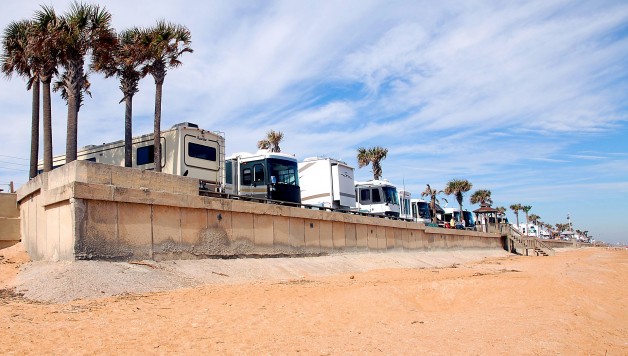5 Safety Tips for Taking a U.S. RV Trip
Renting an RV and taking it across part of the U.S. is of growing interest to people who wish to see more of their own country. By skipping the expensive hotel rooms (or adjoining rooms to have some privacy from any kids in tow), it can be far more convenient, too.
However, what can you do about safety while on a trip? Let’s face it, there are more than a few bad drivers on the roads and bad apples to be avoided, generally. So, how do you (and your family, too) avoid issues while traveling?
Let’s dive in and consider 5 useful safety tips before heading out with your rv rental.
1. RV Insurance
Whether you’re renting the RV or it’s owned by you, check that you have appropriate insurance coverage for your trip.
It’s always possible that an infrequently used RV could have lapsed insurance if it’s not set to automatically renew. If you previously stopped the automatic recharging in hopes of negotiating a cheaper deal, you likely forgot and the insurance may have lapsed. As an owner, verify that your policy is valid, will cover the duration of the trip and still has the right details.
When renting an RV, talk to the company offering the rental to verify how the insurance works, what’s covered and the right thing to do should an unfortunate accident occur.
2. Road Recovery Service
A road recovery service is useful to have for times when the RV you’re driving breaks down unexpectedly. Newer RVs from an rv rental company tend to have the fewest problems, but when models are 5-10 years old, they can start to go wrong. This is because there’s so many separate systems inside (not just under the hood), that items like old refrigerators age past their useful life.
Most recovery services won’t cover you when driving onto a sandy beach, even if there’s signs that it’s safe to do so. You may be lucky enough to find someone with a four-wheel truck and a tow rope, but otherwise you won’t be able to just call AAA. A privately hired recovery truck will be very expensive, so avoid sand traps at all costs.
3. Practice Driving a Rented RV Before Driving Off
When it is your first time behind the wheel of an RV, it will feel completely unfamiliar. They’re often wider that the car you’re used to driving and significantly longer, too. The turning radius is entirely different and there’s a need to adjust how much clearance you require to complete a road turn without hitting any other vehicle. Being careful in this manner will also likely save you from other bad drivers on the road, too. For these reasons, it’s important to practice driving with the RV.
Find an open area where there’s no risk of hitting another vehicle. Also, consider laying down temporary plastic markers as parking spaces and reverse into the space straight on and from different angles. Getting into tight spaces is all part of the fun when arriving at an RV park or national park. Even if you’ve driven before, you might be rustier with driving, so don’t be shy about practicing first with your bigger rig.
4. Make Reservations and Have Backup Plans
Make reservations with your chosen RV park before heading out. If making an online booking, we’d consider double-checking them by calling to verify it, too.
Also, have a backup RV park that’s not too far to drive in case something goes wrong with the booking. This will be a suitable plan B to avoid needing an internet connection on the road to find an alternative RV park and driving instructions about how to get there on RV-accessible roads.
5. Understanding Electricity
Understanding the electrical capacity of the RV you’ll be using is important.
For instance, let’s say that you have a 35-amp RV capacity. In which case, it’s necessary to appreciate what different appliances inside the RV will use. Maybe a toaster will use 13 amps. So, when that’s on, you have 22 amps left. Running an AC unit might consume 15 amps, in which case there’s only 7 amps remaining. It will depend what else you wish to turn on as to whether it’ll run, or you’ll need to finish making your toast before you can do anything else.
When you’re well prepared for an RV trip and have taken care of the safety side, you’re sure to arrive at your destination and have a great time. And in the end, that’s what it’s all about.
Image by Paul Brennan from Pixabay













